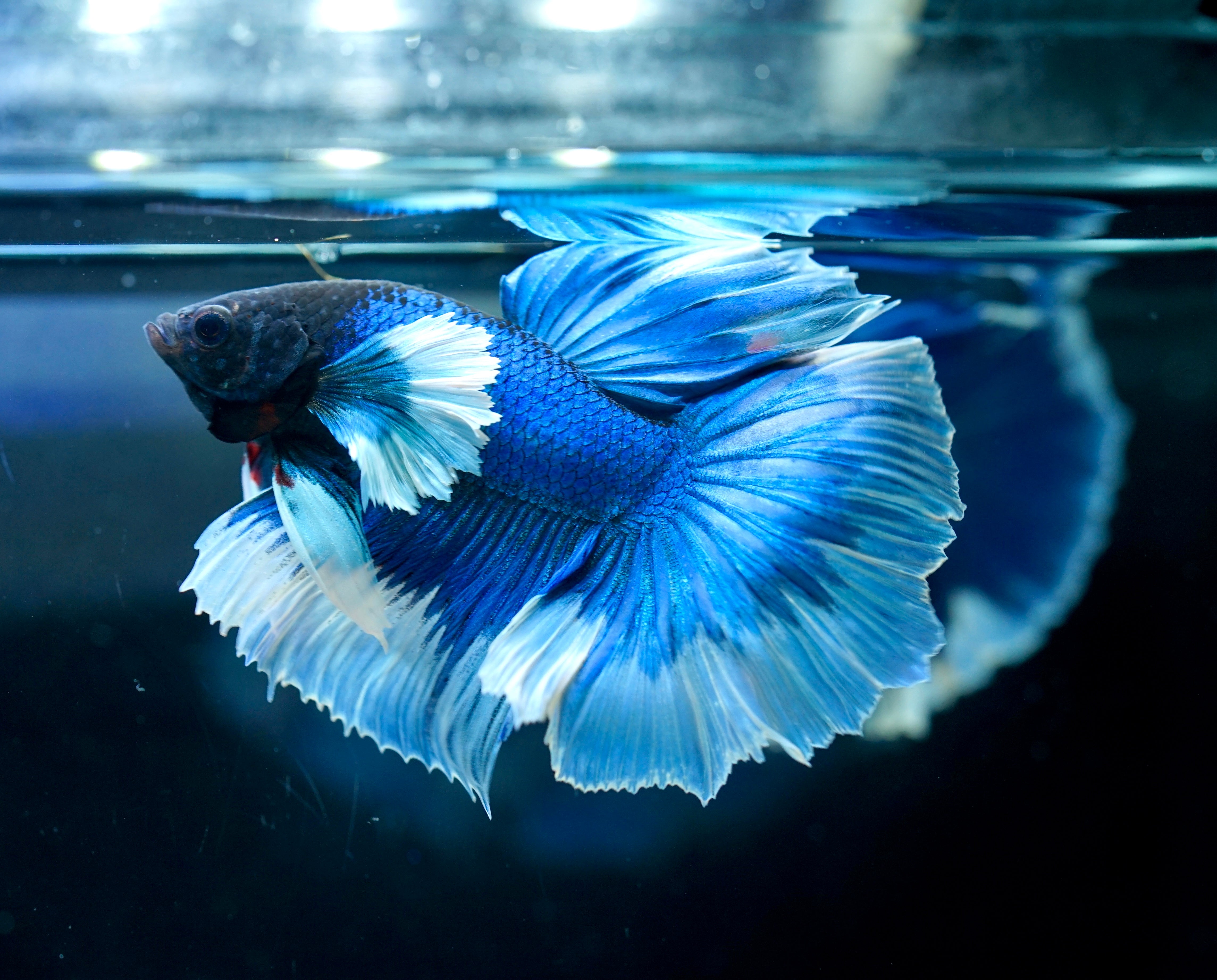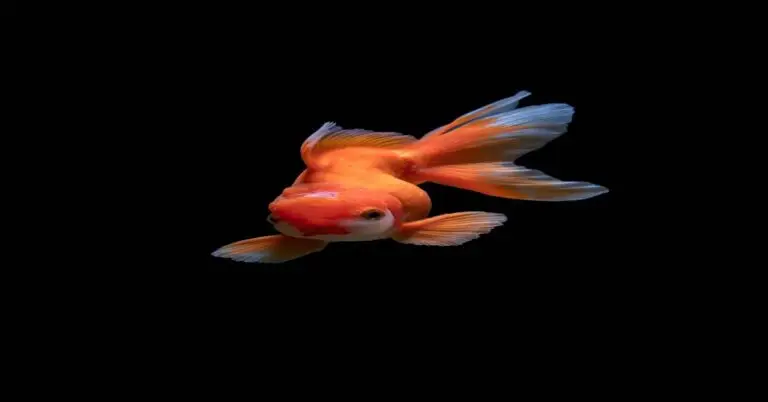These colorful, graceful swimmers have fascinated people for centuries. Their ease of care and stunning appearance make them a favorite among hobbyists. Understanding betta fish care, their various types, and specific needs can help you keep them healthy and happy.
Whether you are interested in male or female bettas, their diet, lifespan, or compatibility with other fish, this guide will provide valuable insights. Learn how to create the perfect environment for your betta fish, ensuring they thrive and bring joy to your aquarium. Dive into the world of betta fish and discover what makes these creatures truly unique.
Betta Fish Care
Betta fish need clean water and a proper diet for a healthy life. Regular tank cleaning and feeding are essential. These fish thrive in warm water and need a safe space to hide.
Betta fish are known for their stunning colors and elegant fins. Caring for these beautiful creatures can be a rewarding experience. Proper care ensures their health and longevity. Below, you will find detailed guidance on how to care for your betta fish.
Tank Setup
Creating the perfect environment is essential. A well-planned tank setup can significantly impact your betta fish’s health.
- Tank size: A minimum of 5 gallons.
- Water temperature: Maintain between 76°F and 81°F.
- Filter: Use a gentle filter to keep water clean.
- Substrate: Use smooth gravel or sand to protect fins.
- Plants and decorations: Add live plants and safe decorations for hiding spots.
Water Quality
Keeping water clean and stable is crucial for betta fish health. Poor water quality can lead to stress and illness.
- Regular water changes: Change 20-25% of water weekly.
- Water conditioner: Neutralize harmful chemicals in tap water.
- PH levels: Maintain a pH between 6.5 and 7.5.
- Ammonia and nitrite: Keep levels at 0 ppm to avoid poisoning.
Feeding
A balanced diet ensures your betta fish stays healthy and vibrant. Proper feeding habits are key.
Feed betta fish twice a day. Offer a variety of high-quality foods.
- Pellets: Use betta-specific pellets for primary nutrition.
- Frozen or live food: Provide bloodworms, brine shrimp, or daphnia occasionally.
- Portion size: Give only what they can eat in 2-3 minutes.
- Avoid overfeeding: Prevent bloating and water contamination.
Tank Mates
Choosing the right tank mates is vital. Betta fish can be territorial, so careful selection is necessary.
- Peaceful species: Opt for small, non-aggressive fish.
- Avoid fin-nippers: Steer clear of fish that may nip betta’s fins.
- Space: Ensure enough room for all inhabitants.
- Monitor behavior: Watch for signs of aggression or stress.
Health Monitoring
Regularly checking your betta fish’s health can help catch issues early. Prevention is better than cure.
- Observe daily: Look for changes in behavior or appearance.
- Common illnesses: Watch for fin rot, ich, and swim bladder disease.
- Quarantine: Isolate new fish before adding them to the tank.
- Treatment: Use appropriate medications if needed.
By following these guidelines, you’ll ensure a happy, healthy life for your betta fish. Proper care leads to vibrant colors and an active, joyful pet.
Types Of Betta Fish
Betta fish come in various types with unique colors and fin shapes. Popular types include the Crowntail, Halfmoon, and Veiltail. Their vibrant appearances make them a favorite among aquarium enthusiasts.
Betta fish, known for their vibrant colors and flowing fins, are a popular choice among fish enthusiasts. Their unique beauty and variety make them fascinating to keep and observe. Let’s dive into the different types of Betta fish you can find.
Veil Tail Betta
Veil Tail Bettas are the most common type. They have long, flowing tails that trail behind them gracefully.
- Common in pet stores: Easy to find and affordable.
- Long tails: Elegant and beautiful.
- Simple care: Ideal for beginners.
Crown Tail Betta
With a striking appearance, Crown Tail Bettas are a favorite among hobbyists. Their tails have a spiky, crown-like shape, which sets them apart.
- Unique tail shape: Resembling a crown.
- Often bred for shows: Popular in competitions.
- Requires careful maintenance: Keep water clean.
Double Tail Betta
Double Tail Bettas are known for their two distinct tail lobes. This gives them a fuller, more dramatic appearance.
These Bettas have:
- Two tail lobes: Create a fuller look.
- Often more vibrant colors: Stunning to watch.
- Slightly more fragile: Needs gentle care.
Halfmoon Betta
Halfmoon Bettas are named for their tail shape, which spreads to 180 degrees, resembling a half moon.
- 180-degree tail spread: Looks like a half moon.
- Popular in shows: Highly valued for beauty.
- It requires spacious tanks and room to swim.
Delta Tail Betta
Delta Tail Bettas have tails that spread out like the Greek letter Delta. Their tails are wide and triangular.
Delta Tail Bettas are known for:
- Wide, triangular tails: Resembling a Greek Delta.
- Variety of colors: Many options available.
- Moderate care needs: Suitable for intermediate keepers.
Plakat Betta
Plakat Bettas have shorter fins and a more robust body. They are closer in appearance to wild Bettas.
These Bettas feature:
- Shorter fins: More similar to wild types.
- Robust body: Stronger and less fragile.
- Active swimmers: Requires ample space.
Elephant Ear Betta
Elephant Ear Bettas are named for their large pectoral fins, which look like elephant ears.
- Large pectoral fins: Resembling elephant ears.
- Beautiful and unique: Eye-catching features.
- Needs gentle water flow: Prevents fin damage.
Rosetail Betta
Rosetail Bettas have excessively ruffled tails. Their tails look like the petals of a rose.
Rosetail Bettas exhibit:
- Ruffled tails: Resembling rose petals.
- High maintenance: Requires pristine water.
- Stunning appearance: Perfect for displays.
Spade Tail Betta
Spade Tail Bettas have tails shaped like a spade on a playing card. They are less common but very distinctive.
- Spade-shaped tail: Unique and striking.
- Less common: Rarely found in stores.
- Easy to care for: Great for all levels.
Exploring the different types of Betta fish can enhance your aquarium experience. Each type brings its own charm and personality, making them a delightful addition to any home.
Female Betta Fish
Female betta fish are known for their vibrant colors and peaceful nature. They thrive in community tanks, unlike their male counterparts.
Female betta fish are an intriguing addition to any aquarium. They are just as vibrant and captivating as their male counterparts. Understanding their behavior and care can enhance their well-being.
Physical Characteristics
Female bettas have unique physical traits. These traits can help you identify them:
- Size: Smaller than males.
- Fins: Shorter and less elaborate.
- Color: Often less vivid but still beautiful.
Behavior
Female bettas display interesting behaviors. These can vary based on their environment and companions:
- Social interaction: More social than males.
- Aggression: Less aggressive but can be territorial.
- Activity level: Active and curious swimmers.
Tank Mates
Choosing suitable tank mates for female bettas is crucial. Here are some friendly companions:
- Small fish: Neon tetras and guppies.
- Bottom dwellers: Corydoras catfish and snails.
- Avoid fin-nippers: Some species may stress them.
Diet
A balanced diet keeps female bettas healthy. They enjoy a variety of foods:
- Pellets: Specially formulated for bettas.
- Frozen food: Bloodworms and brine shrimp.
- Occasional treats: Daphnia and mosquito larvae.
Health Care
Keeping female bettas healthy involves regular checks. Look for these signs:
- Color: Bright and consistent.
- Fins: Smooth and undamaged.
- Activity: Active and responsive.
Understanding these aspects of female betta fish will help them thrive in your aquarium. Happy fishkeeping!
Male Betta Fish
Male betta fish are known for their vibrant colors and flowing fins. They can be territorial and often require separate tanks. These fish thrive in clean, warm water with plenty of hiding spots.
Male betta fish, also known as Siamese fighting fish, are captivating pets. Their vivid colors and majestic fins make them a favorite among fish enthusiasts. Understanding their unique traits is key to providing the best care.
Appearance And Colors
Male bettas come in a range of colors. These colors can be solid or a combination of shades. Their fins and tails are often long and flowing, adding to their allure.
Aggressive Nature
Male bettas are known for their aggression. Here’s what to expect:
- Solitary creatures: They prefer living alone.
- Territory defense: They will fight other males.
- Flare display: They spread their fins to appear larger.
Tank Requirements
Creating the right environment is crucial. Consider the following:
- Tank size: A minimum of 5 gallons is recommended.
- Water conditions: Maintain a temperature of 76-82°F.
- Decorations: Provide hiding spots with plants and caves.
Feeding Habits
Male bettas need a balanced diet. Their feeding habits include:
- Protein-rich food: Offer pellets or flakes designed for bettas.
- Live or frozen food: Treat them with brine shrimp or bloodworms.
- Feeding frequency: Feed them twice daily in small amounts.
Health And Lifespan
Proper care ensures a healthy life. Male bettas can live up to 3 years. Watch for signs of illness like color fading or lethargy. Regular water changes and a clean tank help in preventing diseases.
Breeding Behavior
Breeding male bettas is fascinating. They build bubble nests to attract females. Once the female lays eggs, the male cares for them. He guards and tends to the nest until the fry hatch.
Interaction With Humans
Male bettas can recognize their owners. They may swim excitedly when you approach. Some even learn simple tricks. This interaction makes them engaging pets.
By understanding these aspects of male bettas, you can ensure a happy and healthy life for your vibrant friend.
Betta Fish Lifespan
Betta fish typically live for about three to five years. Proper care, including clean water and a balanced diet, helps them thrive.
Betta fish are a popular choice for aquarium enthusiasts. Known for their vibrant colors and flowing fins, these fish can be a beautiful addition to your home. But how long can you expect your betta fish to live? Understanding the lifespan of betta fish can help you provide the best care for them.
Average Lifespan Of Betta Fish
Betta fish typically live between 2 to 5 years. With the right care, some can even reach 7 years. Factors like diet, tank conditions, and genetics play a significant role in their longevity.
Factors Influencing Betta Fish Lifespan
Several aspects can affect how long your betta fish will live. Here are some key factors:
- Water Quality: Clean water helps prevent diseases.
- Diet: High-quality food boosts their health.
- Tank Size: Larger tanks reduce stress.
- Temperature: Stable, warm water supports their metabolism.
- Genetics: Some bettas naturally live longer.
Tips To Extend Betta Fish Lifespan
To help your betta fish live a longer life, follow these tips:
- Maintain Water Quality: Change the water regularly.
- Feed a Balanced Diet: Use pellets and occasional live food.
- Avoid Overfeeding: Overfeeding can cause health issues.
- Monitor Tank Conditions: Check temperature and pH levels.
- Reduce Stress: Keep the tank in a quiet place.
Common Health Issues In Betta Fish
Betta fish can suffer from various health problems. Knowing these issues helps in early detection and treatment:
- Fin Rot: Bacterial infection causing fin damage.
- Ich: Parasite causing white spots on the body.
- Swim Bladder Disease: Affects buoyancy and swimming.
- Velvet Disease: Parasites causing a gold dust appearance.
- Dropsy: Swelling due to internal bacterial infection.
Recognizing Signs Of Aging In Betta Fish
As betta fish age, they may show some common signs. Recognizing these signs can help you provide better care:
- Faded Colors: Bright colors may dull over time.
- Reduced Activity: Older bettas swim less.
- Loss of Appetite: May eat less or refuse food.
- Clamped Fins: Fins held close to the body.
- Slower Response: Reacts slower to stimuli.
Providing Comfort For Aging Betta Fish
To make your aging betta fish comfortable, consider the following tips:
- Gentle Filtration: Use a filter with gentle flow.
- Soft Substrate: Avoid sharp gravel to prevent injuries.
- Consistent Temperature: Keep water temperature stable.
- Low-Stress Environment: Minimize tank disturbances.
- Easy Access to Food: Place food where they can easily find it.
By understanding these factors and providing the right care, you can help your betta fish live a longer, healthier life.
Betta Fish Food
Betta fish thrive on a diet of high-quality pellets and occasional treats like bloodworms. Ensure their food is protein-rich for optimal health.
Betta fish are beautiful, vibrant, and relatively easy to care for. Their diet is crucial to their health. Feeding them the right food ensures they live a long, healthy life.
Types Of Betta Fish Food
Betta fish can eat various types of food. Here’s a quick overview of the common options:
- Pellets: These are the most popular betta food. They are convenient and nutritionally balanced.
- Flakes: Similar to pellets but can create more waste in the tank.
- Frozen Food: Includes options like bloodworms and brine shrimp, offering high nutritional value.
- Live Food: Such as daphnia and mosquito larvae. Great for occasional treats.
- Freeze-Dried Food: Provides a good balance of nutrition. Requires soaking before feeding to prevent digestive issues.
How Often To Feed Betta Fish
Feeding frequency is vital for your betta’s health. Overfeeding can lead to obesity and other problems.
- Twice a day: Feed small portions twice daily.
- Consistency: Maintain a regular feeding schedule.
- Observation: Watch your betta for signs of overeating or underfeeding.
What To Avoid In Betta Fish Food
Certain foods can harm your betta. Knowing what to avoid is essential.
- Bread: This can cause bloating and digestive issues.
- Human food: Often lacks necessary nutrients and can be harmful.
- Excessive live food: Can introduce parasites if not properly sourced.
Portion Control For Betta Fish
Proper portion sizes prevent overfeeding. Overfeeding can lead to health issues.
- Size of the betta’s eye: Feed an amount roughly the size of their eye.
- Two-minute rule: Only give what they can eat in two minutes.
- Adjustments: Modify portions based on your betta’s size and activity level.
What Fish Can Live With Betta Fish
Betta fish can live with peaceful tank mates. Suitable companions include snails, small shrimp, and certain types of corydoras. Avoid fin-nippers and aggressive fish.
Betta fish are popular pets known for their vibrant colors and flowing fins. But, can they share their tank with other fish? Let’s explore some options.
Peaceful Community Fish
Certain peaceful fish can coexist with bettas. Here are some ideal companions:
- Neon Tetras: Small and peaceful, they rarely bother bettas.
- Corydoras Catfish: Bottom-dwellers that keep to themselves.
- Ember Tetras: Non-aggressive and similar in size to neon tetras.
- Harlequin Rasboras: Peaceful and prefers to swim in schools.
Bottom-dwelling Fish
Bottom-dwellers make great tank mates. They tend to stay out of the betta’s way.
- Kuhli Loaches: Slender and calm, they enjoy hiding.
- Bristlenose Plecos: Peaceful and helps keep the tank clean.
- Otocinclus Catfish: Small and peaceful algae eaters.
Snails And Shrimp
Snails and shrimp can also live with bettas. They add diversity to the tank.
- Mystery Snails: Slow-moving and keep the tank clean.
- Amano Shrimp: Active and helps control algae.
- Cherry Shrimp: Small and colorful, but ensure your betta won’t see them as food.
Fish To Avoid
Not all fish are suitable companions for bettas. Some can cause stress or harm.
- Tiger Barbs: Aggressive and prone to fin-nipping.
- Guppies: Bright colors can trigger aggression in bettas.
- Cichlids: Generally too aggressive for bettas.
- Goldfish: Different water needs and can be too messy.
Considerations For Tank Size
Tank size is crucial for a harmonious environment. Here are some guidelines:
- Minimum Tank Size: At least 10 gallons for a community tank.
- Hiding Spots: Provide plenty of plants and decorations.
- Regular Monitoring: Keep an eye on interactions and behavior.
By choosing compatible tank mates, you can create a peaceful and vibrant aquarium for your betta. Always observe your fish and make adjustments as needed.
Do Betta Fish Sleep
Betta fish do sleep, usually at night. They often rest on the bottom or on plant leaves.
Betta fish have unique behaviors that intrigue many pet owners. One common question is, “Do betta fish sleep? ”
Betta Fish Sleeping Patterns
Betta fish do sleep, but their patterns differ from humans. They don’t have eyelids, so they don’t close their eyes. Instead, they enter a state of rest. Here’s how you can spot a sleeping betta:
- Floating near the surface: Bettas often sleep while floating.
- Resting on leaves: Bettas may lie on plant leaves.
- Hiding in decorations: Bettas might find cozy spots to sleep.
Ideal Sleep Environment For Betta Fish
Creating a good sleep environment for your betta is crucial. Bettas need a calm and dark place to rest. Follow these tips to ensure your betta has a comfortable sleeping area:
- Keep the tank dark at night: Ensure no lights are on during their sleep time.
- Maintain a quiet environment: Avoid loud noises near the tank.
- Provide hiding spots: Use plants and decorations for resting places.
How To Tell If Your Betta Is Sleeping
Recognizing when your betta is sleeping can help avoid unnecessary worry. Observing their behavior closely can give you clues. Look for these signs:
- Stillness: Bettas will be motionless.
- Reduced response: They might not react quickly to stimuli.
- Horizontal position: Bettas may lie sideways or in a relaxed posture.
Importance Of Sleep For Betta Fish
Sleep is vital for your betta’s health. It helps them stay active and stress-free. Ensuring they get enough rest can improve their lifespan and overall well-being. Remember, a well-rested betta is a happy betta.
How Long Can A Betta Fish Go Without Food
Betta fish can survive without food for up to 14 days. Short fasting periods won’t harm them. Ensure they have clean water.
Betta fish are stunning, with their vivid colors and flowing fins. Yet, caring for them involves knowing their feeding needs. One common question is how long a betta fish can go without food.
Natural Fasting Periods
Betta fish, like many animals, have natural fasting periods. They can survive without food for certain durations:
- Several days: Betta fish can go without food for up to three days.
- Weekends: If you’re away for a weekend, your betta will be okay.
- Short vacations: Betta fish can manage up to a week without food.
Effects Of Prolonged Fasting
Prolonged fasting impacts betta fish differently. Understanding these effects is essential for their well-being.
Betta fish may survive longer periods without food. But it could weaken their immune systems. They might become more vulnerable to diseases. Prolonged fasting can also lead to stress.
Preparing For Absence
If you plan to be away, preparation is key. Here are some tips to ensure your betta fish stays healthy:
- Automatic feeders: These can dispense food at set times.
- Fish sitters: Ask a friend to feed your betta.
- Pre-measured portions: Prepare portions for ease of feeding.
Monitoring Health After Fasting
After a period without food, monitor your betta’s health closely. Look for signs of distress. These may include lethargy or unusual behavior. Provide small, regular meals to reestablish a routine.
Taking these steps ensures your betta fish remains vibrant and healthy.
Do Betta Fish Need A Heater
Betta fish thrive in warm water. A heater helps maintain the ideal temperature of 75-80°F. Cold water can stress them.
Betta fish are captivating pets with vibrant colors and flowing fins. To keep them healthy, the right environment is essential. One important aspect is maintaining the correct water temperature.
Ideal Temperature For Betta Fish
Betta fish thrive in warm water. They need a consistent temperature to stay healthy. Keeping the water between 76 and 81 degrees Fahrenheit is crucial.
Benefits Of Using A Heater
Using a heater can provide several benefits for your betta fish. Here are a few key points to consider:
- Consistent temperature: Helps maintain a stable environment.
- Prevents stress: Reduces the risk of temperature-related stress.
- Promotes health: Supports overall well-being and reduces illness.
Risks Of Not Using A Heater
Without a heater, betta fish can face several risks. A few important points to note are:
- Fluctuating temperatures: Causes stress and weakens the immune system.
- Cold water: This can lead to lethargy and poor health.
- Increased illness: Makes fish more susceptible to diseases.
Selecting The Right Heater
Choosing the right heater is important. Here’s what to look for:
- Adjustable thermostat: Allows precise temperature control.
- Automatic shut-off: Prevents overheating and ensures safety.
- Suitable wattage: Matches the size of your tank for efficient heating.
Monitoring Water Temperature
Regularly monitoring the water temperature is vital. Ensure you have a reliable thermometer. Check the temperature daily to maintain a stable environment for your betta fish.
Additional Tips For Betta Fish Care
Apart from using a heater, there are other tips for caring for your betta fish:
- Clean water: Regularly change the water to keep it clean.
- Proper diet: Provide a balanced diet for optimal health.
- Avoid overcrowding: Give your betta ample space to swim and thrive.
By paying attention to these details, you can create a comfortable home for your betta fish.

Credit: houstonaqua.com
Frequently Asked Questions
Is It Better To Have 1 Or 2 Betta Fish?
It’s better to have one betta fish per tank. Betta fish are territorial and may fight if kept together.
Are Betta Fish Easy To Keep Alive?
Betta fish are relatively easy to keep alive. They require a clean tank, proper food, and regular care. Ensure suitable water conditions and avoid overcrowding. Proper maintenance helps them thrive.
What Makes Betta Fish Happy?
Betta fish thrive in clean, warm water around 78°F. Provide a spacious tank with hiding spots and plants. Feed them a balanced diet. Minimize stress by maintaining a peaceful environment and avoiding sudden changes. Regularly interact with them to keep them engaged and happy.
What Are The Do And Don’ts Of A Betta Fish?
Do’s: Provide a clean tank, maintain water temperature, offer a balanced diet, and ensure regular tank cleaning. Don’ts: Avoid overcrowding, using harsh water, overfeeding, or placing the tank in direct sunlight.
Conclusion
Caring for betta fish is fun and rewarding. With proper care, they thrive. Understand their needs. Freshwater, the right food, and a heater help. Male and female bettas have unique traits. They can coexist with some fish. Bettas do sleep and need regular feeding.
Missing meals can harm them. Lifespan varies, but good care extends it. Remember, simple steps keep your betta healthy and happy. Enjoy your betta fish journey!






1 thought on “Betta Fish”